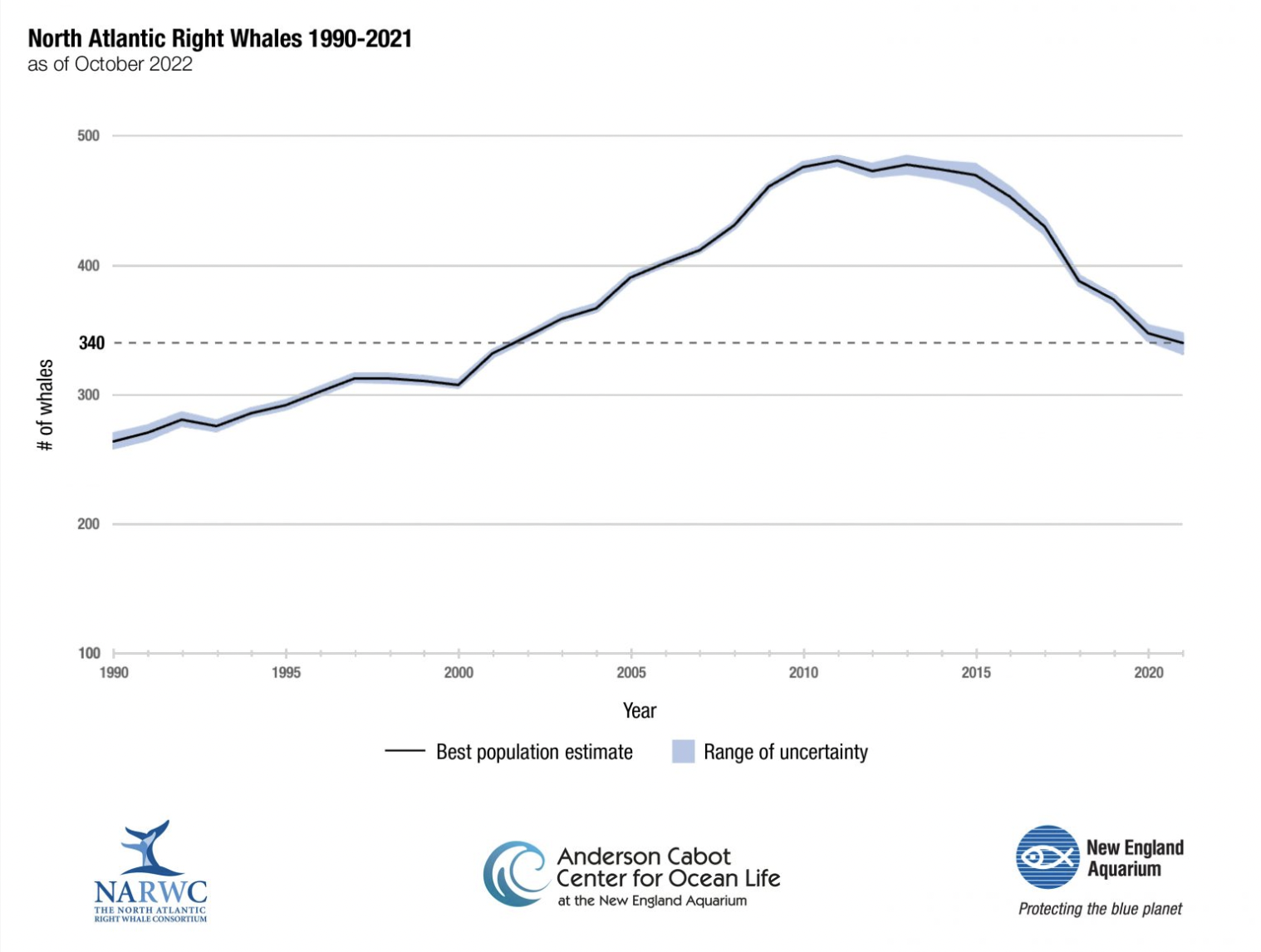The global North Atlantic right whale population has continued its downward turn, declining to an amount not seen since the early 2000s, according to a new report by the North Atlantic Right Whale Consortium.
The organization, which produces an annual report on the population of the North Atlantic right whale, found that about 340 whales existed in 2021 — a drop of about eight from the estimated population in 2020.
“These whales need to be protected throughout their range,” Heather Pettis, executive administrator of the North Atlantic Right Whale Consortium, told the Gazette by phone this week.
The annual report on the right whale population is conducted using a breadth of available sighting data and the help of a model which estimates the population within a handful of living animals, Ms. Pettis said.
“It’s able to account for whales that [go] in and out of the population,” she said. “We’re using the most updated data available.”
A consortium of organizations along the Atlantic coast conduct flights to spot and identify right whales throuhghout the year.
While the population has continued on a downward trend throughout the last decade, that trend slowed between 2020 and 2021. Since the early 2010s, the population has fallen from a high of nearly 500 whales.
Ms. Pettis told the Gazette that an increasing frequency of entanglements, deaths and injuries has contributed to the right whale’s decline, adding that injuries resulting from entanglements has reduced the fertility of the right whale population.
In the report that came out last week, scientists detailed the grim news. Only 15 right whale calves have been born in 2022, less than the 18 born in 2021 and significantly fewer than the average of 24 calves born per year in the early 2000’s. Scientists added that the group of new calves included no new first-time mothers, which they said supports findings from a new paper that shows a downward trend in the number of female right whales capable of breeding. Recent research has also shown that right whales are getting smaller, in part due to frequent entanglements. Their declining body size has led to female right whales producing fewer calves, the research stated.
In 2022, five whales have been spotted entangled in fishing gear, and at least five others have been injured by it, causing wounds and scars, scientists said. There has been one detected vessel strike to a right whale in 2022.
The 2021 population data was presented last week at a meeting of the North Atlantic Right Whale Consortium in New Bedford. Ms. Pettis said the report is useful for the scientific community in understanding the health of the right whale population, and evaluating next steps for its protection.
“It’s a lot of sharing of ideas and research,” she said. “Sort of motivating where we go next.”
Ms. Pettis said a reduction in harm from collisions and entanglements is necessary in order for the species to survive. She pointed to vessel speed reductions and ropeless fishing technologies as strong steps toward a healthy population.
Although the report was largely bleak, scientists noted that the population's rate of decline had slowed in recent years. When the population reached its nadir in the late nineties and early 2000’s, protection measures helped increase the population by approximately 150 whales over the ensuing decade, providing hope that a similar improvement could be made in the upcoming decade.
Ms. Pettis said that the animals themselves are strong and capable of survival, so long as they are given the space and environment to adequately reproduce.
“They are resilient,” she said. “ We saw this population increase in the 2000s.”
She added that a collaboration between conservationists and the fishing industry will be vital for the future of the right whale, noting that there has been much more collaborative effort between the two sectors than many believe.
“There’s a lot of good faith effort on both parties,” she said. “That’s what’s going to be required to save the species.”








Comments (4)
Comments
Comment policy »